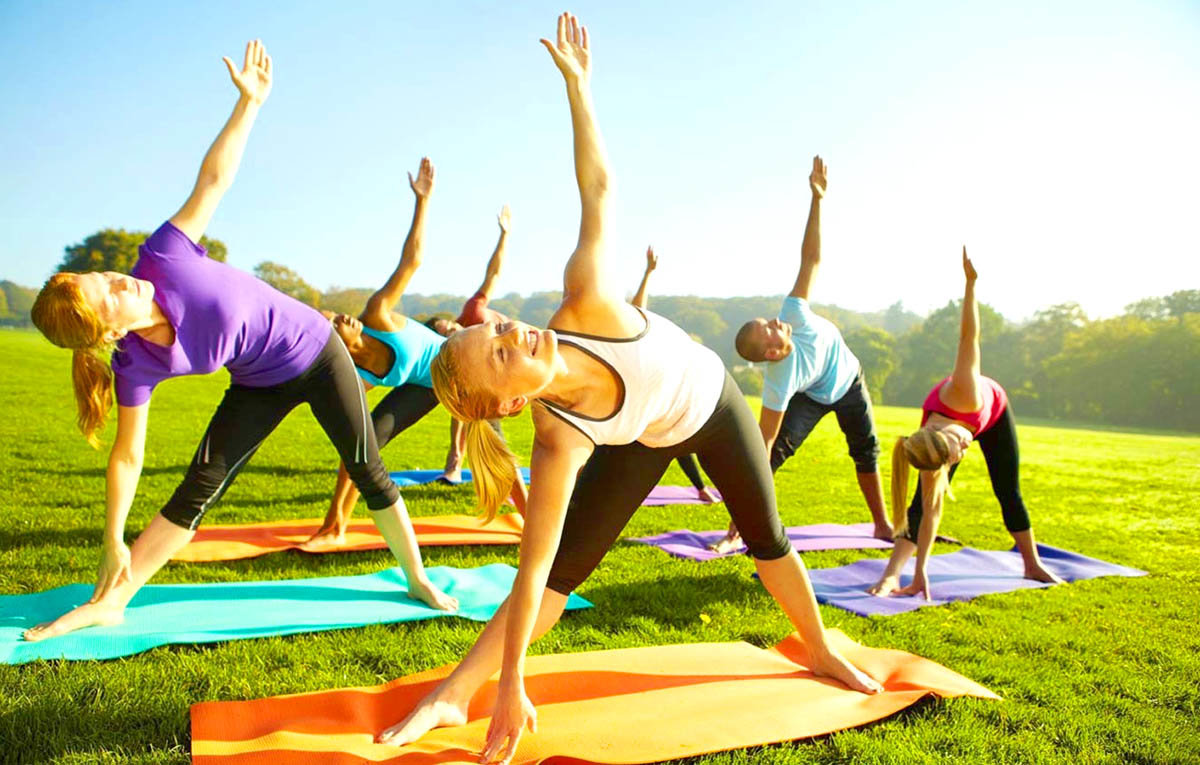Bodyweight Strength Training
The idea for this book came to me while I was serving time in Angola. It was my sixth year of eight years in prison, and I had already coached a lot of guys. As a result, I had a bunch of notes, ideas and workout sketches that I kept in a thick folder. In fact, the idea to write the book was suggested to me by a security guard whose name was, for example, Ronnie.
Ronnie, a big and powerful black man, was respected by all the prisoners. He was a local powerlifter of high rank and not only looked like a tank, but also had the same remarkable strength. He always spoke softly and confidently. And just as gently and confidently he wrung the hands of the offenders. I got along with Ronnie – we had a common interest. Sometimes in the evenings, at the end of his tour, he would stop by my cell to talk about certain strength exercises or to listen to interesting facts about the history of iron sports. And then one day, when we were talking about the nuances of the hand press, Ronnie said: “You know, you would have written it all down. Nobody knows anything about it at large. Everything was lost. ” After shoveling through a ton of magazines and books in the prison library, I came to the conclusion that Ronnie was right.
For several years I have been bringing all my notes into a divine form. I cannot say that it was difficult – the system had already been written, since I had been training on it for several years. But reworking the text into a real tutorial took a lot of effort. Gradually, I found the right way to present the material, since I had plenty of time.
This book, The Training Zone, is my creation, the result of my hard work and rethinking. For your convenience and a better understanding of my bodyweight training method, I will first describe the structure of the book, highlighting the key points of each chapter.

Part I. Preparation
In the first part, you will find the history of the origin of the Training Zone. It contains an introduction, a chapter on the old school bodyweight training, a chapter on the advantages of the system versus modern methods, and a chapter “About this book.” These four parts contain everything you need to provide you with the theoretical knowledge of my training system, its main features and benefits. You will learn about the traditions of physical training in prisons, the origins and history of the origin of the Training Zone. Moreover, this part of the book talks first-hand about training in prisons, which can be extremely useful for those who have a misconception about this subject.
Part II. The Big Six
The second part of the book is called The Big Six: Force Movements. This part is the basis of the system. As the name suggests, the system is based on six basic types of body movement – the Big Six.
There are thousands of exercises for muscle training, and any more or less competent trainer will confirm this, but in reality only a few basic exercises are needed for everyday training. The human body consists of more than five hundred different muscles that have evolved as a whole. That is why, by working on only one muscle group, you disrupt the balance in the work of the body and destroy the instincts inherent in nature, for example, coordination. That is why the best method of daily training is to do multiple strength exercises that work all muscle groups at the same time and allow you not only to keep fit, but also to constantly build strength and strengthen endurance.
The Big Six
The system is based on six basic movements that involve the entire body – from head to toes! These six movements have been selected through trial and error over the centuries and are based on the principles of anatomy and kinesiology. In table 1, each type of movement inherent in the human body corresponds to the muscle groups that are involved in them. Even with a cursory glance at the table, you will surely notice that the Big Six strength exercises force all muscle groups to work. Each muscle group complements each other ideally: the “bridge” works the entire back surface of the body, leg lifts — the entire front, push-ups load the upper body, pull-ups involve the muscles involved in pushing and stretching.
Every part of the body does its job. Certain muscle groups can be partially recruited by different types of movement. For example, push-ups also work the abs, “bridge” – triceps, etc. The table “Big Six Movements” shows the main muscle groups trained for this type of movement. As you can see, these six exercises are a necessary and sufficient training load for the whole body. A large load will be an overkill, and a lesser one – a shortage.
TABLE 1. Big six movements
| TYPE OF MOVEMENT | MAIN WORKING GROUPS OF MUSCLES |
| Push ups | Muscles of the chest (large and small), anterior (frontal) deltoid and triceps |
| Squats | Quads, gluteus muscles (“back”), hamstrings, inner thighs, thighs, calves, feet |
| Pull-ups | Latissimus dorsi ( “Wings”), rhomboid and trapezius muscles, biceps, forearms and hands |
| Leg raises | Rectus abdominis muscle (“six cubes”), external oblique muscle of the abdomen (waist muscles), serratus (external rib muscles), internal rib muscles, diaphragm, transverse abdominal muscles, rectus femoris (quadriceps), sartorius muscle, entire front surface thighs, grip muscles |
| ” Bridge “ | All back muscles, lower back, hamstrings, hamstrings |
| Handstand push-ups | Triceps, trapeze, forearms, hands, fingers, shoulder girdle |
You can also note the exercise ” plank ” with an emphasis on the work of the stabilizing muscles of the press and muscles of the middle part of the back. We offer testosterone cypionate uk.
Ten levels
Doing a lot of high-intensity reps is good. As discussed in Chapter 2, adding reps builds endurance, but doesn’t build strength or build muscle. Strength and muscle is the main goal of the training process in prison and the meaning of the Training Zone. This is why each of the six movements of the Big Six consists of ten basic exercises.
These ten exercises are called the Ten Levels. Performing them gradually and regularly, the athlete moves from easy to more difficult, from initial to professional level and ensures a stable and long-term result. It should be noted that a different sequence of exercises will not lead you to your cherished goal – at least not in the foreseeable future.
“Ten Levels” are variations on the basic movements of the Big Six. There are ten different types of exercises for every Big Six movement — push-ups, squats, pull-ups, leg raises, bridge, and handstand push-ups. In the second part, in separate chapters, each type of movement and the options for its development are described in detail. For example, the squat chapter contains all the information you need to know about this type of exercise and ten different types of exercise, ranked by difficulty, from the simplest technique to the most difficult.

The first level, the shoulderstand squat, is the easiest squat, while the tenth level, the one-legged squat, is the most difficult exercise. Almost everyone, even untrained ones, an athlete can do squats in a shoulder stand, but squats on one leg without prior preparation can be performed by units. The main goal of such a structure is to show trainees how, without resorting to the help of a personal trainer and special equipment, to learn how to correctly perform a series of squats on one leg for 20 or 50 repetitions.
By learning how to do the Level Ten strength exercises without too much stress, you can consider yourself a master of bodyweight training. You will not achieve such strength, swinging in the gym from 180 kg. That’s a decent level of athleticism! Today, not all athletes are familiar with the old school bodyweight training techniques and can perform this trick perfectly. Many, in an attempt to learn to squat on one leg, have a hard time making one attempt, which seems impossible, since they do not know that the shortcut to excellence in this exercise is through the Ten Levels. In modern gyms, these ten levels have been completely replaced by other exercises with free weights or fashionable equipment. However, the desired result is still unattainable, and then steroids are used.
“Ten Levels” is the most important, revolutionary advantage of the Training Zone. If you learn how to properly use these steps of building strength, you can turn from a frail boy into a steel thug and fully realize all your physical potential inherent in nature. That is why the most effective techniques are kept secret by those who master them perfectly, because knowledge is power! Information about the method of building up force rarely left the prison walls and, moreover, was never published anywhere. The book you are holding in your hands is the first to describe a training system using a complication system and is being presented to the general public for the first time. One thing I’m sure for sure: a lot of guys behind bars will hate me for giving away their secret.
Master level
Performing the most difficult bodyweight exercises from Level Ten is the main goal of the training process. Since the Tenth level represents the highest degree of mastery of the technique of working with body weight, the last (tenth) exercises in the Big Six series are combined into a single master level, which includes six exercises. The conquest of this peak is the main goal of everyone who is engaged in a system of training with their own weight.
There are few athletes in the world who can perform the entire series of these exercises perfectly. There are not many of those who can do one or two exercises out of six. And the reason for this is that everyone is trying to train specific muscle groups and nobody is training the whole body. This is a big mistake. Outside of correctional facilities, there are only a handful of elite athletes or fans who can perform one-arm push-ups, but I emphasize that several athletes in the world will be able to master all the top-level exercises. And you must definitely decide to become one of them.
Training programs
In each chapter, after the detailed description of the exercise, there is a short but understandable long-term training program that will guide you through all ten levels. Six programs (for each type of movement from the Big Six) detail all ten levels to make it easier to understand the training process and help the trainee achieve the desired results and compare them with the reference ones – to be able to assess their current results and understand when to move to the next level. This is extremely important, as haste and insufficient study of exercises at each level can undermine health, and improper performance and poor results can lead to injury and demotivation.
Variants
Each Big Six ends with a short subsection called “Variants.” There are many variations of the Big Six exercises, but not all of them are included in the Ten Levels. The reason is simple – it is impossible to execute all the options in one program, they can easily overload you.
Let’s take a look at these options. Bar push-ups work on virtually the same muscle groups as regular push-ups and are therefore considered a push-up option. Push-ups with the transition to the forearms (“tiger paw”) – a forgotten body weight exercise that refers to the handstand press, is also considered an option. Jumping and jumping from a squat are “explosive” options for squats.
TABLE 2. Ten Squat Levels
| Level 1 | Shoulderstand squats |
| Level 2 | Folding Knife Squats |
| Level 3 | Support squats |
| Level 4 | Incomplete squats |
| Level 5 | Full squats |
| Level 6 | Narrow squats |
| Level 7 | Uneven Squats |
| Level 8 | Incomplete squats on one leg |
| Level 9 | Squat on one leg with support |
| Level 10 | Squats on one leg |
TABLE 3. Master level
| TYPE OF MOVEMENT | MASTER LEVEL |
| Push ups | Push-ups on one arm |
| Squats | Squats on one leg |
| Pull-ups | One-arm chin-ups |
| Leg raises | Hanging straight leg raises |
| “Bridge” | Full bridge from a standing position |
| Handstand push-ups | Push-ups in a rack on one hand |
All options do not replace ten-level exercises. At the same time, adding exercises will diversify your workout, and doing them will be especially useful during the healing period of minor injuries that make basic exercises impossible.

Part III. Self-training
In prison they called me el Entrenador – Coach, because I (not for free) trained everyone, using a whole arsenal of different techniques and exercises. But I was an exception. The one who owns the information owns the world, and the information is jealously guarded in the prison, like all useful things. Outside of prison, a personal trainer is not a problem. Despite the fact that their services cost a fortune, not many of them understand the essence of the training process. You are lucky if you find a really good coach, but a good coach is very rare. And in the last two chapters of this book, I want to convince you to become your own coach.
Hang up!
The training zone is not just a collection of exercises, techniques, and training ideas. This book is a complete physical training system. It’s a strategy and a lifestyle. This is philosophy, if you like. And this is a subtle ray of hope that helped me and many guys balance on the brink of life and death. This is why it is so important to understand that the book is a complete system, a strategy for developing physical abilities, and not isolated exercises. I hope that in this chapter I was able to briefly describe the fundamental principles of the training system.
This book is the quintessence of knowledge about physical training. It is not enough to read this book; you must use it. So let’s get started! The best way to make sure you understand the benefits of the Training Zone correctly is to read Chapter Three. And then read all chapters 5 through 10. Learn the Big Six to avoid training mistakes.
So, let’s begin! Without equipment. Start with the first of ten levels of push-ups, squats, pull-ups, and leg raises. If you have minor injuries that prevent you from doing the exercises fully, simplify them. Track your results, train according to the program. Return to the book from time to time and review the tips for daily training in Chapter 12.
From the moment you start training in the Training Zone, namely from today, your main goal is to perform perfectly the exercises of the master level. Not just one or two exercises, but the entire level.
Let me emphasize: The overriding goal of training is to perfectly complete all six master level exercises.
It doesn’t matter what physical shape you are in now and how old you are. The results may not be long in coming, or it may take you years of effort and effort. But you have a powerful tool – a book. No more excuses, start exercising now! There is no time for weakness in prison. Physical weakness and emotional vulnerability, revered in the free world, are not encouraged in prison.

